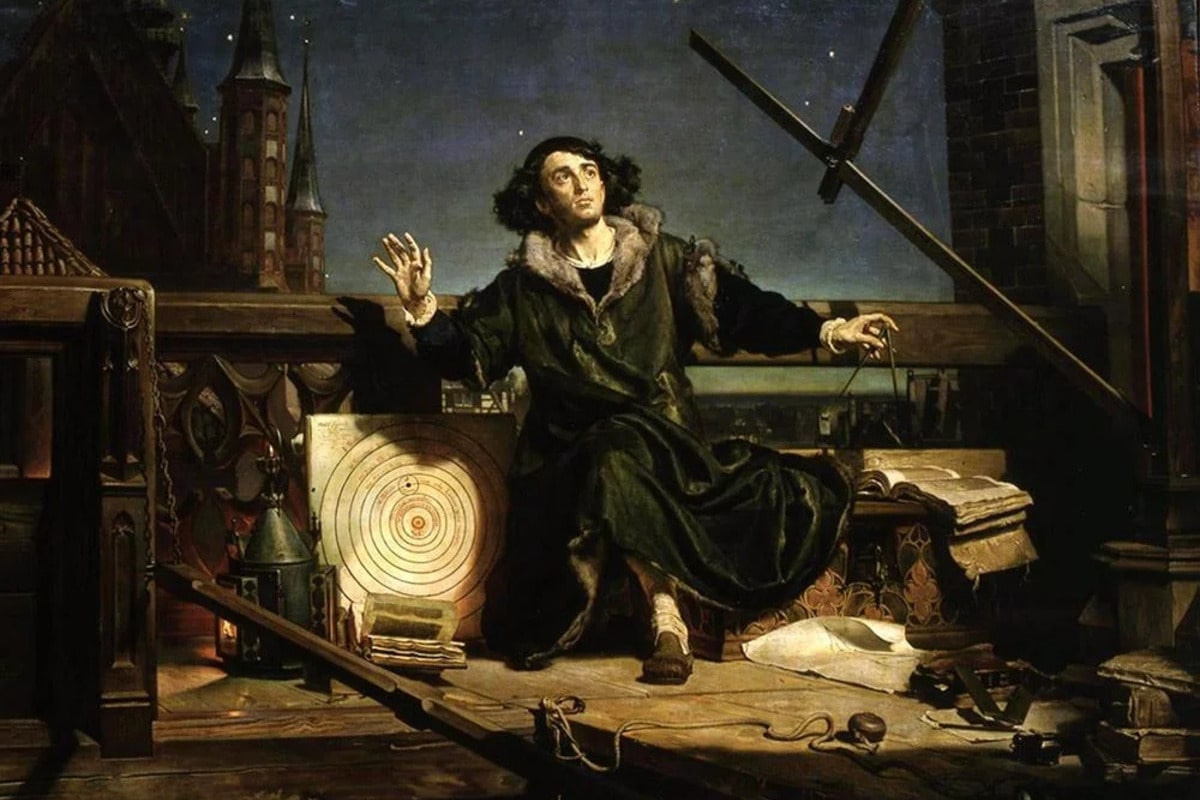Nicolaus Copernicus was a distinguished Polish astronomer, mathematician, and physician who forever changed humanity’s understanding of the Solar System’s structure. His revolutionary heliocentric theory disproved the long-held geocentric model and laid the foundation for modern astronomy. Copernicus was not only a great scientist but also a multifaceted individual interested in various fields of science and art. This article gathers fascinating facts about Nicolaus Copernicus that you may not have known but which will undoubtedly broaden your knowledge of this legendary figure.
- Nicolaus Copernicus was born on February 19, 1473, in the city of Toruń, in what is now Poland. His father was a wealthy merchant, and his mother came from a noble family. From an early age, Copernicus received an excellent education that laid the groundwork for his future scientific achievements.
- In 1491, Copernicus enrolled at the University of Kraków, where he studied mathematics, astronomy, and medicine. Later, he pursued further studies in Italy at the universities of Padua and Bologna, deepening his knowledge. His education spanned multiple disciplines, helping him develop a broad perspective.
- Copernicus’s most famous work, De revolutionibus orbium coelestium (On the Revolutions of the Heavenly Spheres), was published in 1543, shortly after his death. In it, he presented the heliocentric model, placing the Sun at the center of the universe with Earth and other planets orbiting around it. This theory fundamentally challenged the then-dominant geocentric worldview.
- Copernicus hesitated to publish his theory for many years, fearing criticism from both the Church and the academic community. He spent much time refining his ideas privately. It was only days before his death that he finally saw his groundbreaking work in print.
- Although famous as an astronomer, Copernicus also served as a physician and canon. These roles provided him with financial stability and social standing. His medical practice connected him with various intellectual circles.
- Copernicus was a skilled mathematician and astronomer who drew upon ancient Greek and Arabic sources to develop his system. He studied the works of Ptolemy but criticized their geocentric model. His scientific approach combined tradition with innovation.
- He conducted meticulous astronomical observations and argued that planetary motions could be explained without complex epicycle systems characteristic of earlier models. He aimed to create a simpler yet accurate model of celestial movements. This approach laid the groundwork for future astronomical research.
- Living during the Renaissance, Copernicus contributed to the flourishing of scientific and intellectual ideas in Europe. His discoveries inspired later scientists such as Kepler, Galileo, and Newton. In this way, he sparked a scientific revolution.
- In 1514, Copernicus wrote an anonymous treatise titled Commentariolus (Little Commentary), succinctly outlining the heliocentric ideas and provoking early scholarly debates. This work remained relatively unknown until the later publication of his major book. However, Commentariolus was instrumental in developing his theory.
- Beyond astronomy, Copernicus showed interest in economics, law, and politics, reflecting his broad education. He actively engaged in the scientific and ecclesiastical discussions of his time. His views often reflected a pragmatic approach to life and science.
- Copernicus was fluent in several languages including Latin, Greek, and German, enabling him to read ancient and contemporary scholarly works in their original forms. This skill fostered his scientific independence and critical source analysis. His linguistic abilities were key to his success.
- Despite his scientific contributions, Copernicus remained humble and cautious, avoiding conflicts and open disputes. He maintained good relations with the Church, helping him avoid persecution. His death in 1543 eased tensions surrounding his ideas.
- Copernicus’s ideas were not immediately accepted, but decades later became the foundation of modern astronomy. His discoveries fundamentally altered humanity’s understanding of Earth’s place in the cosmos. His legacy continues to inspire scientists today.
- He also believed that the universe is infinite and has no rigid boundaries, a revolutionary concept at the time. This distinguished him from earlier philosophers who viewed the world as a finite sphere. His vision anticipated later cosmological theories.
- Numerous astronomical objects bear Copernicus’s name, including a lunar crater and several asteroids. Universities and scientific institutions also honor him. This recognition underscores his monumental contribution to science.
- Copernicus died in the same year his seminal work was published, symbolically highlighting his life’s journey and scientific heritage. His discoveries marked the beginning of a scientific revolution that changed history.
These fascinating and remarkable facts about Nicolaus Copernicus reveal the multifaceted nature of his personality and his importance in the history of science. They help deepen the understanding of this outstanding scholar’s contribution to shaping the modern view of the universe. You may not have known many of these facts, but now they will allow you to appreciate Copernicus’s role in world science from a new perspective.





